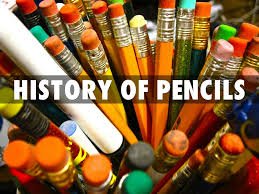The Inventor of the Pencil – A Historical Insight
Introduction to the Pencil’s Invention
The humble pencil, an essential tool in everyday life, has a history that dates back centuries. Its invention marked a significant advancement in writing and drawing tools, revolutionizing how we create and record information. The modern pencil as we know it owes its existence to the pioneering work of a few inventive minds.
The Early Developments
The story of the pencil begins in the 16th century with the discovery of graphite. Unlike previous writing tools that used ink or metal points, graphite provided a new medium for marking surfaces. The first pencils were made by encasing graphite in wood, a method that was refined over time to create the pencils we use today.
The Role of Nicolas-Jacques Conté
Nicolas-Jacques Conté, a French artist and inventor, played a crucial role in the development of the modern pencil. In 1795, during the French Revolutionary War, Conté developed a method to mix powdered graphite with clay, which allowed for the production of pencils with different degrees of hardness. This innovation improved the quality and versatility of pencils, making them more practical for both artistic and everyday use.
The Evolution of Pencil Production
Since Conté’s breakthrough, pencil manufacturing has evolved significantly. Advances in materials and technology have led to the creation of pencils with various features, including ergonomic designs and specialized leads. Today, pencils are used in numerous fields, from education to professional artistry, highlighting their enduring importance.

Why This News is Important
Understanding the Impact of Innovation
The invention of the pencil is a prime example of how a single innovation can have a profound impact on various aspects of society. By improving the quality and usability of pencils, Nicolas-Jacques Conté’s contribution has influenced educational methods, artistic techniques, and even everyday communication.
Relevance in Modern Education
For students, understanding the history of everyday tools like pencils provides valuable insights into how technological advancements shape our world. Knowledge of such historical developments is not only interesting but also relevant for exams, especially in subjects that touch on technological and historical progress.
Appreciation of Historical Contributions
Recognizing the contributions of inventors like Conté helps appreciate the role of creativity and problem-solving in technological progress. It underscores the importance of innovation in addressing practical challenges and improving existing tools, a concept that is essential in many government exams.
Historical Context:
Background Information
The pencil’s journey from a simple graphite stick to a sophisticated writing instrument reflects broader trends in material science and manufacturing. Early pencils were made by inserting raw graphite into wooden holders, but this method had limitations in terms of durability and precision. The invention of the pencil by Nicolas-Jacques Conté marked a significant advancement, as his method of combining graphite with clay allowed for a more controlled and versatile product. This innovation occurred during a period of intense technological development in Europe, showcasing how necessity and creativity drive progress.
Key Takeaways from “The Inventor of the Pencil”
| Serial Number | Key Takeaway |
|---|---|
| 1 | The modern pencil was significantly improved by Nicolas-Jacques Conté in 1795. |
| 2 | Conté’s method involved mixing graphite with clay to produce pencils of various hardness. |
| 3 | Early pencils were simple graphite sticks encased in wood, which evolved over time. |
| 4 | The invention of the pencil reflects broader trends in material science and technology. |
| 5 | Understanding the pencil’s history highlights the impact of innovation on everyday tools. |
Important FAQs for Students from this News
1. Who is credited with inventing the modern pencil?
Nicolas-Jacques Conté, a French artist and inventor, is credited with developing the modern pencil in 1795 by mixing graphite with clay.
2. What was the primary innovation introduced by Conté in pencil manufacturing?
Conté’s primary innovation was the method of mixing graphite with clay to produce pencils with varying degrees of hardness, improving their usability and quality.
3. How did early pencils differ from modern ones?
Early pencils were simple graphite sticks encased in wood, while modern pencils are produced with a mix of graphite and clay and often feature ergonomic designs and various lead types.
4. Why is the history of the pencil important for students preparing for exams?
Understanding the history of the pencil highlights the impact of technological innovations on everyday tools and provides insight into how progress and creativity drive advancements, which can be relevant for exam topics related to technology and history.
5. How has pencil manufacturing evolved since Conté’s time?
Pencil manufacturing has evolved with advances in materials and technology, leading to pencils with different features such as specialized leads and ergonomic designs, enhancing their functionality and application.
Some Important Current Affairs Links


















